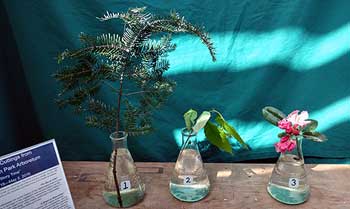“Story Time” at the Washington Park Arboretum
The stories of people and plants are intricately intertwined. The plants of the University of Washington Botanic Gardens have many stories to tell, and here are just a few to wet your whistle. Explore our website at to look up and locate plants in the Arboretum and learn more of our stories.

1) Abies grandis – Grand Fir “Fir Above It All”
- This particular tree has witnessed the entire history of the Washington Park Arboretum. It is almost certainly a remnant of the vegetation that existed before the site was logged circa 1896. You can read more about this remarkable tree’s history on the March 2016 plant profile.
2) Castenea dentata – American Chestnut
“A Blight to Remember”
- Once upon a time in the eastern forests of North America, the mighty American Chestnut was a ubiquitous giant. This tree could shape entire ecosystems, providing food and shelter to all manner of beasts and men. It was said that the chestnuts would sometimes pile up so high you could scoop them up with a shovel. This fast-growing timber tree provided wood that could be used to make almost anything a carpenter can build. Sadly, this tree has been decimated by “chestnut blight”, a fungus that quickly girdles and kills the tree. The University of Washington Botanic Gardens is committed to the conservation of this tree and many other species that are threatened.
3) Rhododendron ‘Lem’s Cameo’ “Halfdan Lem and the Rhodies of War”
- Some of Halfdan Lem’s story was told to the Vancouver Rhododendron Society meeting of March 1993. When World War II started, Mr. Fred Rose in England sent Lem seed and scions of many of his crosses and the resulting plants formed the nucleus of Lem’s breeding program. By the mid-sixties, he had made over 2000 crosses and had about 50,000 seedlings. One of his first introductions was “Lem’s Cameo”, an outstanding and popular variety. Halfdan was reported to be quite a “colorful” character, and you can see some of his legacy in the Puget Sound Hybrid Garden. Many other stories about Halfdan Lem may be found in the Journal of the American Rhododendron Society, which is available online.